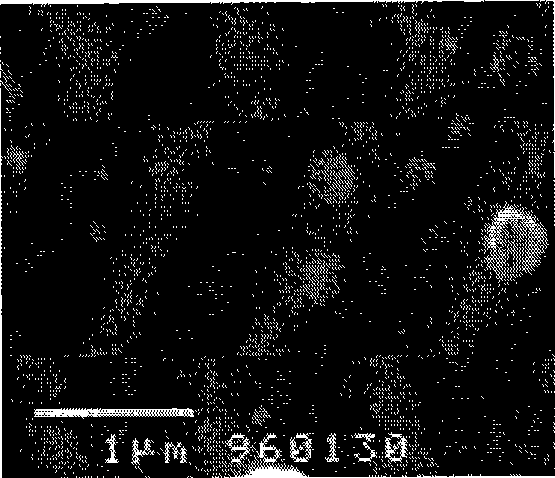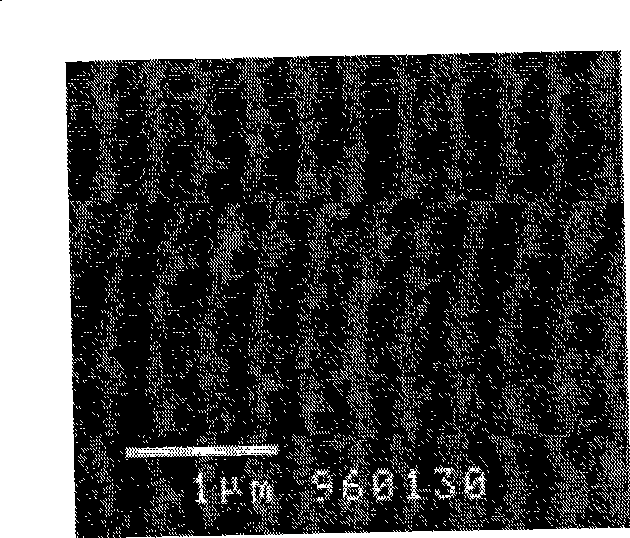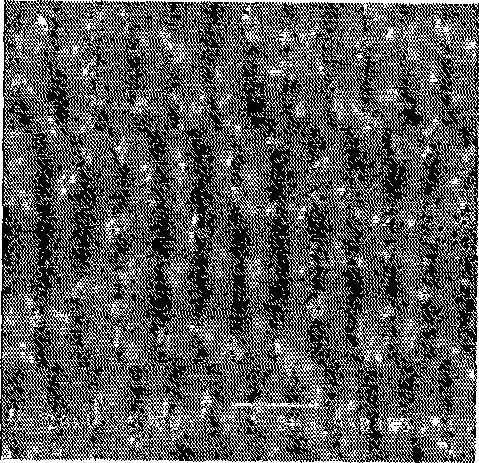Film resistor structure and method for manufacturing same
A technology of thin film resistors and manufacturing methods, which is applied in the direction of resistors, coated resistive materials, non-adjustable metal resistors, etc., can solve the problems that thin film resistor products have not been recognized by the market, cannot become market products, and have low resistance values
- Summary
- Abstract
- Description
- Claims
- Application Information
AI Technical Summary
Problems solved by technology
Method used
Image
Examples
no. 1 example
[0025] In this embodiment, a semiconductor metal oxide layer (such as copper oxide or cuprous oxide) with a fixed content is formed on the substrate, and a conductive metal layer (such as palladium) with different numbers of layers is formed above it, and the content of the conductive metal is observed. The effect of the change. The following is a description of the process steps.
[0026] Taking two glass slides as substrates, five layers of cuprous oxide (Cu 2 O) production, its total thickness is about 0.1 μm. Afterwards, the group A test pieces were subjected to a transfer annealing treatment for about 60 minutes in a heating furnace at a temperature of about 350°C. After annealing, cuprous oxide is converted to copper oxide (CuO). The test pieces of group B have not been annealed, so they are still cuprous oxide (Cu 2 O).
[0027] Then, using chloroform solution as a carrier, palladium acetate (Pd(OAc) 2 ) was mixed in a chloroform solution (0.1g / 16cc) and applied. ...
no. 2 example
[0037] In this embodiment, a conductive metal layer (such as palladium) with a fixed content is first formed on the substrate, and then a semiconductor metal oxide layer (such as copper oxide) with different layers is formed on the substrate, and the content of the semiconductor metal oxide layer is observed. The effect of the change. The following is a description of the process steps.
[0038] Take three glass slides as the base material, carry out secondary palladium acetate (Pd(OAc) 2 ) Spin-Coating operation of chloroform solution (0.1g / 16cc). Among them, thermal decomposition at 200°C for about 15 minutes after the first spin-coating of palladium acetate, and thermal decomposition at 200°C for about 60 minutes after the second spin-coating of palladium acetate to reduce the palladium metal.
[0039] Then copper acetate (Cu(OAc) 2 ) alcohol solution (0.1g / 16cc) for 1, 3 and 4 times of spin-coating (Spin-Coating) operations, and after each coating operation is completed...
PUM
 Login to View More
Login to View More Abstract
Description
Claims
Application Information
 Login to View More
Login to View More - Generate Ideas
- Intellectual Property
- Life Sciences
- Materials
- Tech Scout
- Unparalleled Data Quality
- Higher Quality Content
- 60% Fewer Hallucinations
Browse by: Latest US Patents, China's latest patents, Technical Efficacy Thesaurus, Application Domain, Technology Topic, Popular Technical Reports.
© 2025 PatSnap. All rights reserved.Legal|Privacy policy|Modern Slavery Act Transparency Statement|Sitemap|About US| Contact US: help@patsnap.com



